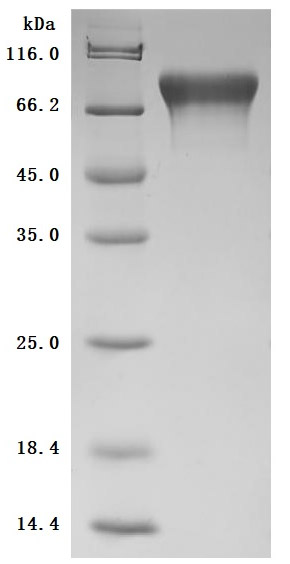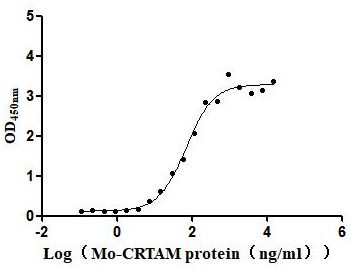This Human Cadm1 recombinant protein was produced in Mammalian cell, where the gene sequence encoding Human Cadm1 (48-388aa) was expressed with the C-terminal 10xHis-tag. The purity of this Cadm1 protein was greater than 95% by SDS-PAGE. Its endotoxin content is less than 1.0 EU/ug as determined by LAL method. The activity was validated. In a functional ELISA, immobilized mouse CADM1 at 2 μg/mL can bind Mouse CRTAM (CSB-MP614820MO) with the EC50 of 52.61-92.92 ng/mL.
CADM1 (Cell adhesion molecule 1) was originally discovered and characterized by multiple research groups. As a result, the molecule has many names in the scientific literature, including cell adhesion molecule 1 (CADM1), synaptic cell adhesion molecule (synCAM), biogenic Sperm immunoglobulin superfamily molecules (sgIGSF), IGSF4, BL2, ST17, NECL2, RA175, and CADM1A. CADM1 is a glycoprotein located on the cell surface. It was initially identified as a tumor suppressor gene through functional complementation experiments in human non-small cell lung cancer. At present, a large amount of evidence shows that CADM1 is involved in the formation and development of many human tumors. CADM1 was initially identified as a tumor suppressor, and accumulating evidence suggests that downregulation of CADM1 contributes to tumorigenesis in various cancers, but its mechanism of action requires further investigation. The development of active and stable CADM1 protein can facilitate the further exploration of related mechanisms and provide new clues for tumor monitoring, diagnosis and treatment.





